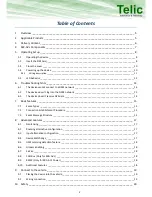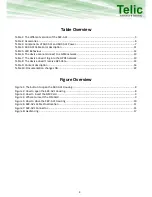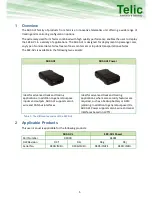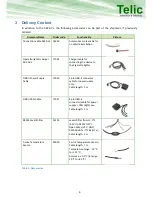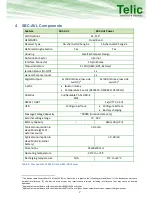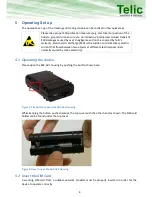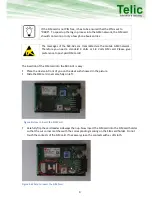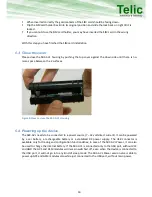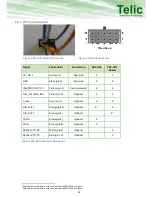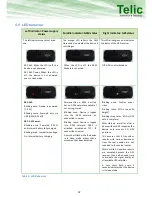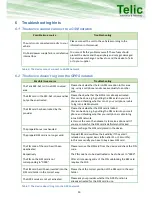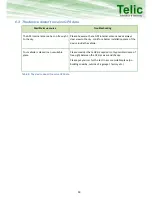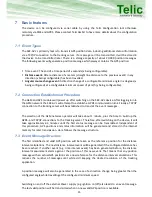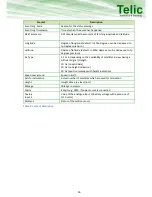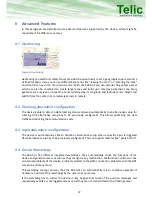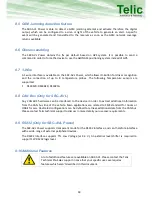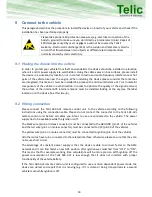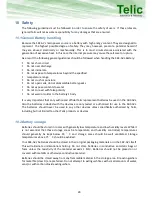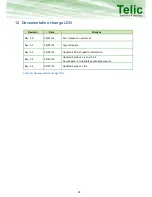
dfdfdsf
15
7 Basic features
The device can be configured via serial cable by using the Telic Configuration tool otherwise
remotely via SMS and GPRS. Please contact Telic GmbH to have more details about the configuration
procedure.
7.1 Event Types
The SBC-AVL’s primarily task is to transmit GPS position data, including additional status information
via a TCP/IP connection to the tracking server. If a message can’t be transmitted, it will be stored in
the device to be transmitted later. There is a storage capacity of about 20.000 position messages.
The following events will generate a position message which always contains the GPS position:
Time event: The end of a time period of x seconds (x being configurable).
Distance event:
After a distance of x meters (straight line distance to the previous event) in any
direction (x being configurable) has been travelled.
Angular course change event:
A direction change of a configurable minimum angle in x degrees (x
being configured) at a configurable minimum speed of y km/h (y being configurable).
7.2 Connection Establishment Procedure
The GSM and GPS modules will power up after switching on the SBC-AVL device. After logging in into
the GSM network the SBC-AVL will attempt to establish a GPRS communication link. Finally a TCP/IP
connection to the tracking server will be established to transmit the event messages.
The selection of the GSM network operator will take about 1 minute, plus the time to build up the
GPRS- and TCP/IP-connections to the tracking server. Therefore, after switching on the device, it will
take approximately 2-3 minutes until the first status message can be transmitted. Independent of
this procedure, GPS positions and status information will be generated and stored in the internal
memory for later transmission. Here follows the message structure.
7.3 Event Message Structure
The first identified and valid GPS position will be taken as the reference position for the distance
interval calculations. The next distance interval event will be generated if the configured distance has
been reached. If another event (e.g. time interval event) has been generated before, the distance
interval measurement starts again at the position of this new event. That means that any position
message with an actual GPS position sets a new reference for the distance interval calculations. This
reduces the number of messages sent while still keeping the desired resolution of the tracking
application.
A position message will also be generated in the case of a direction change being greater than the
configured angle while travelling at the configured minimum speed.
Switching on and off the external Power supply (e.g. ignition on/off) also leads to an event message.
The last valid position will be transmitted when no new valid GPS position is available.


